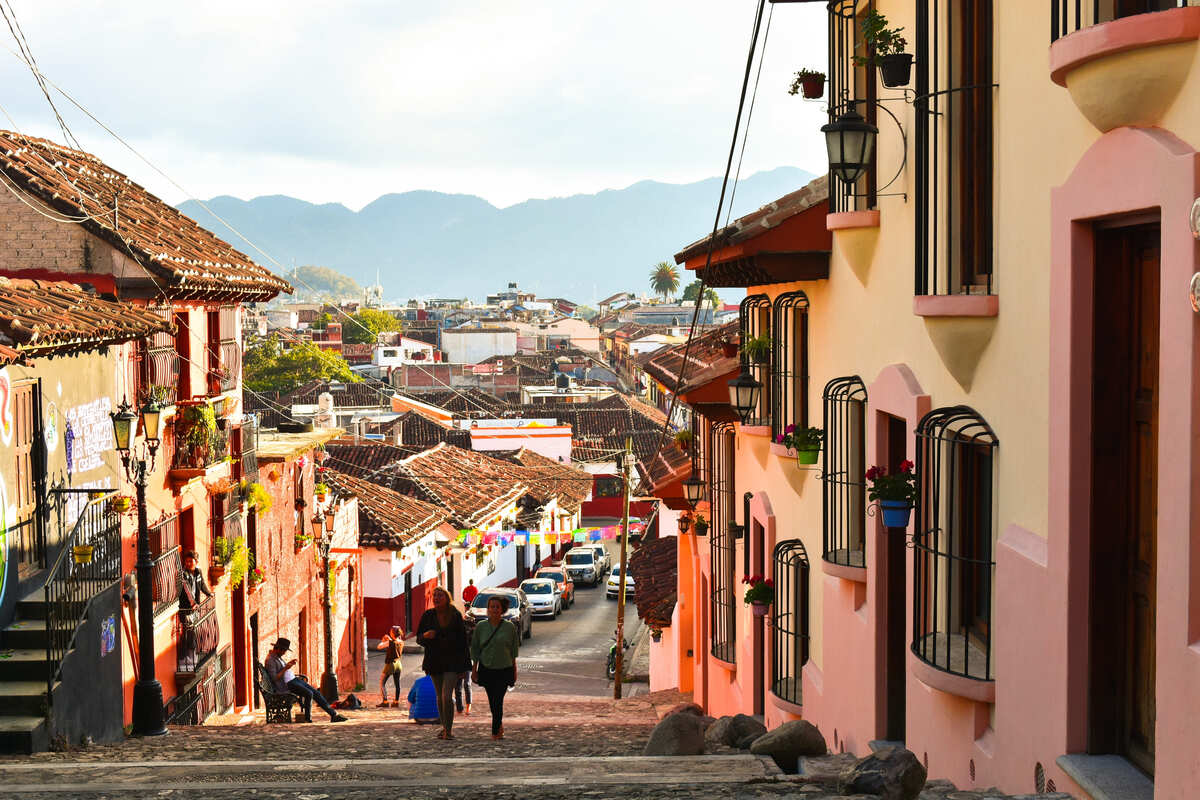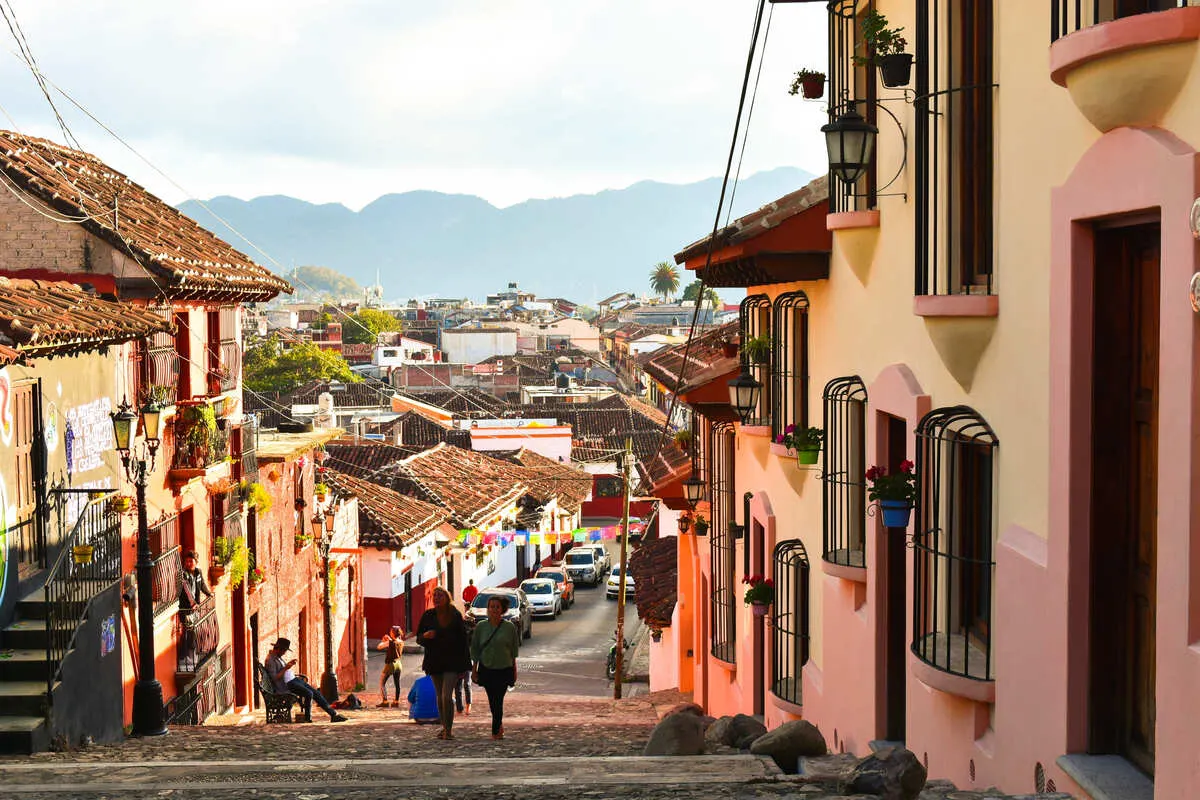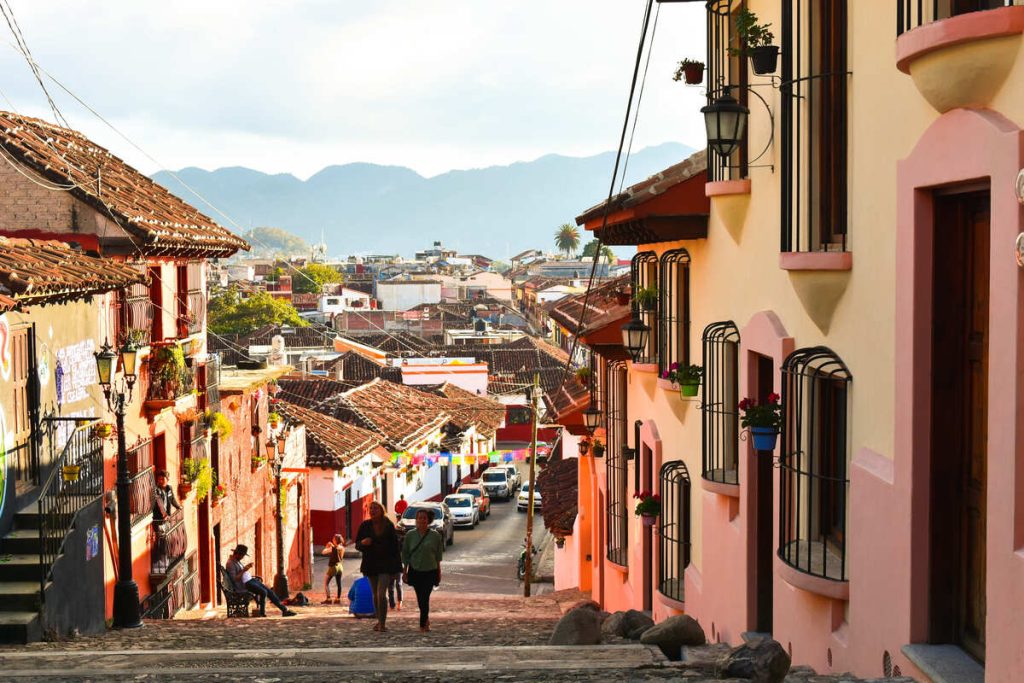
We all know Europe for the cobbled streets, ancient town squares, and soaring cathedrals built at a time when architectural beauty still mattered―but oftentimes, we forget there are fragments of the Old Continent right here, on our side of the pond.
Believe it or not, you don’t have to fly an 8–10-hour red-eye to soak up all that historic charm: a simple trip south of the border will do.
One of the best-preserved colonial towns in existence, San Cristóbal de Las Casas is drawing in hundreds of thousands of tourists right now, and if you think all that Mexico has to offer is beaches and luxury all-inclusives, you might be in for a surprise with this one:


80% Increase In Tourism This Year
Tucked away in the highlands of the inland state of Chiapas, in southern Mexico, San Cristóbal de las Casas is one of those places that could easily be described as being cropped out of a storybook. It’s no wonder it’s seen a whopping 80% increase in tourism levels this summer:
Founded by Spanish settlers in the 16th century, and barely changed ever since, it is a hilly town criss-crossed by cobbled lanes and dotted with pastel-colored low houses with red-tiled roofs. You know, exactly as you’d find them somewhere in Spain.


A walk around San Cristóbal’s compact, but culture-loaded center feels like being transported back to Southern Europe, with the Baroque churches, picture-perfect plazas flanked by arcaded buildings, and the quirky cafés.
However, if there’s one spot where the European-ness of it all is most visible, that’s a striking yellow-and-red San Cristóbal Cathedral, which towers over the lush bushes of Parque Central.
Colonial Landmarks Galore
Construction on this monument began all the way back in 1528, and the Spanish spared no funds in making sure it felt like the ornate churches they had back at home, adding elaborate reliefs and gilded altarpieces.


The cathedral is not only San Cristóbal’s religious landmark with a noteworthy background:
Equally built in the 16th century, the Templo de Santo Domingo is a minor Dominican church distinguished by its pink-stone facade, and accompanying convent, though it no longer functions as one. Instead of nuns, it houses an artisan market.
It’s a great spot for buying souvenirs and crafts, by the way.
Located at the top of a staircase, east of the center, Iglesia de Guadalupe is yet another must-see for culture buffs, as is Iglesia de San Cristóbalito, exactly opposite, on a hill to the west, and one of the earliest churches built in the former colony.


Old churches are cool, but they’re not all that there is to it.
A surviving part of the once-extensive city walls, Arco del Carmen was built in the 17th century in a combination of Baroque and Mudéjar styles.
A short 10-minute walk from the arch, you’ll also reach Andador Eclesiástico, an elegant pedestrianized street lined with boutique shops and art galleries.
Incredible Museums
If you’re into museums―and if you’re an Europhile, we suspect you are―there are dozens of fascinating exhibits to be visited around town.


The Amber Museum, for instance, is located inside a former convent, and it displays a number of Chiapas’ most impressive colonial-era jewelry.
Meanwhile, the Centro de Textiles del Mundo Maya (inside the former convent of Santo Domingo) is home to gorgeous Mayan textile pieces.
Our personal favorite, however, is Casa Na Bolom, the home of Danish explorer Frans Blom. Other than being maintained almost exactly as it was originally, it now accommodates a museum dedicated to Mayan culture and a peaceful landscaped garden.
How Safe Is The Town?


Last but not least, you may be wondering how safe San Cristóbal is to visit, considering Chiapas is listed under the U.S. State Department’s Travel Advisory as a Level 3 destination. In other words, Americans are discouraged from visiting.
While it’s true the state has higher rates of criminality and gang activity than, say, Yucatán, San Cristóbal is generally considered safe for American tourists.
It’s primarily a cultural destination, and there is a noticeable police presence in the Historic Center, which typically discourages criminals from operating in the area. Violent crime is almost a non-issue, whereas pickpocketing can be rife, particularly in the densely concentrated Downtown.


However, as long as you adhere to widely-known safety practices for traveling in Mexico, such as avoiding the suburbs, refraining from displaying unnecessary signs of wealth, and sticking to well-lit streets at night, it’s highly likely you’ll be just fine.
What Else To Know Before Visiting
- For street food, check out Mercado Viejo, in the heart of the Historic Center: there are several stalls selling Chiapas coffee, the local, traditional cacao, and regional delicacies
- Craving Chiapaneco cuisine in a no-frills environment? Make sure you check out Tierra y Cielo (and get their chef-d’œuvre green ceviche of seabass and dried shrimp.
- A short drive away from town, Orquídeas Moxviquil is a tranquil nature reserve featuring winding trails, lined with orchids and bromeliads, and dotted with idyllic ponds
- Looking for a place to stay? Hotel Plaza Magnolias is situated in the very center, within walking distance of several landmarks, and overnight rates there average $50-a-night
- Getting to San Cristóbal, the closest airport is Tuxtla Gutiérrez International Airport (TGZ), a 50-minute drive from town (at the moment, it only hosts domestic flights)
Vinicius Costa
Vini, our senior lead writer at Travel Off Path, has over 60+ countries under his belt (and currently weaving tales from Paris!), and a knack for turning off-the-beaten-path experiences into informative stories that will have you packing your bags.
The Travel Off Path Advantage: Your Travel Toolkit
Subscribe To Our Latest Posts
Enter your email address to subscribe to Travel Off Path’s latest breaking travel news, straight to your inbox.
Please visit:
Our Sponsor


